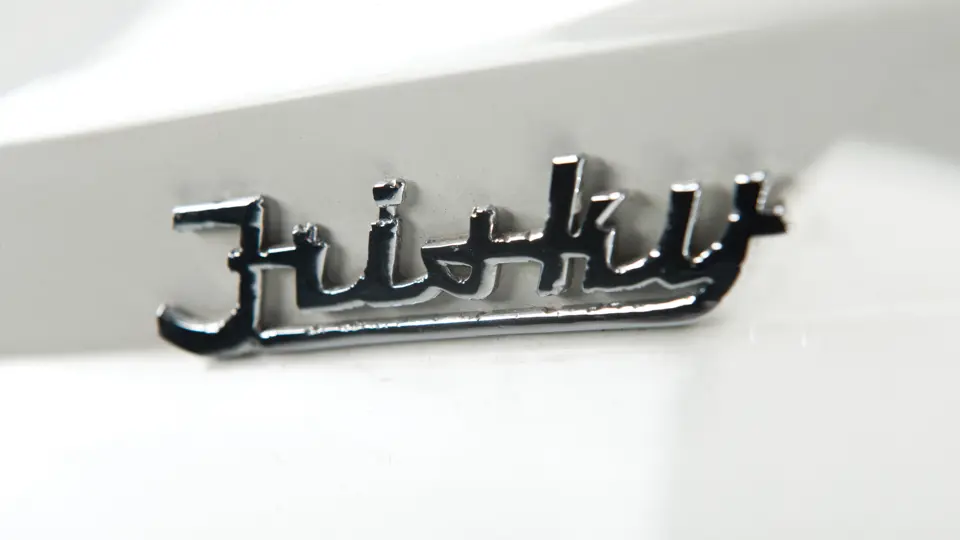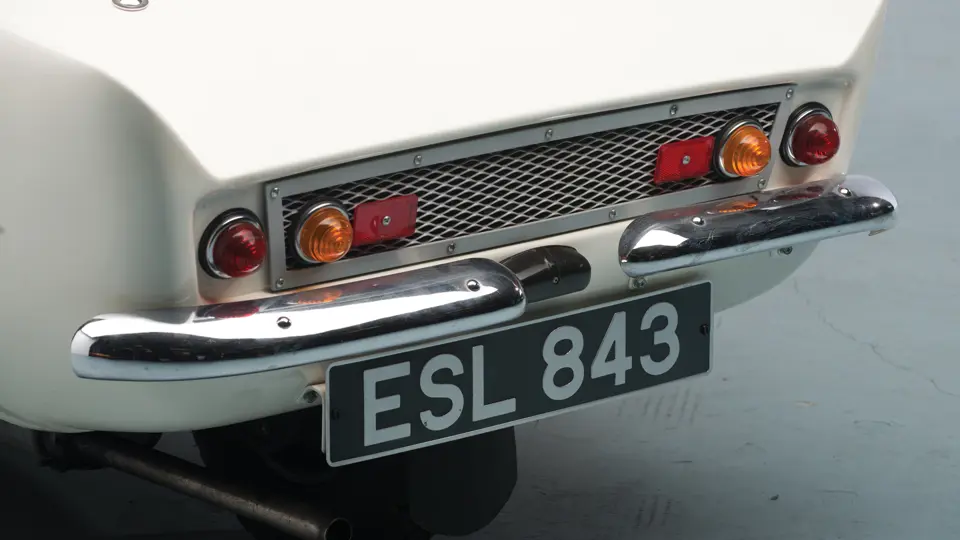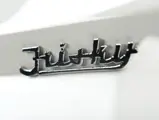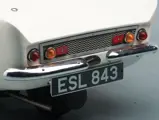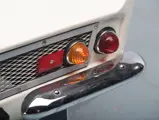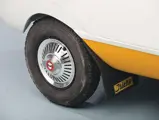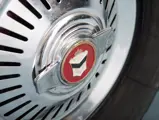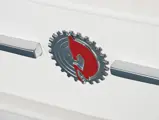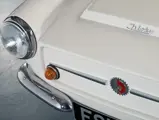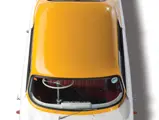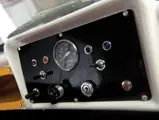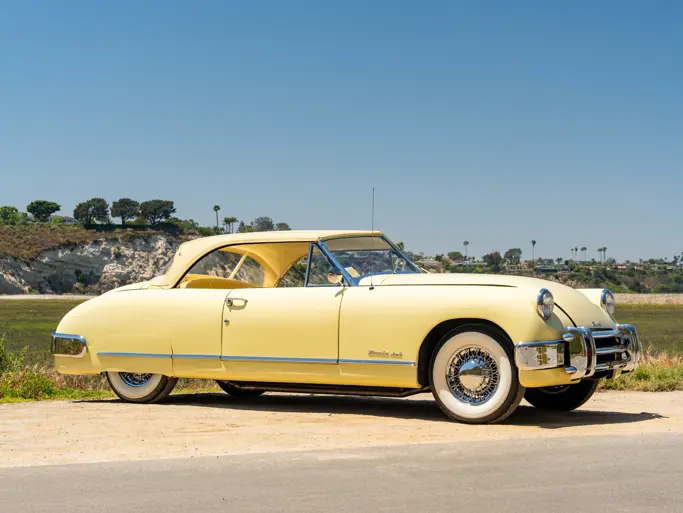An English microcar with Michelotti styling.
SPECIFICATIONS
Manufacturer: Frisky Cars (1959) Ltd.
Origin: Wolverhampton, England
Production: 1,500 (all types)
Motor: Villiers 1-cyl., 2-stroke
Displacement: 197 cc
Power: 9.5 hp
Length: 10 ft. 2 in.
Identification No. 20487
Captain Raymond Flower, a former racing driver, along with his two brothers and a design engineer from Kieft, Gordon Bedson, were involved in several automotive projects under the name of Phoenix, in Cairo, Egypt. These came to naught with the overthrow of King Farouk and the resulting Suez Crisis, so the brothers returned to England. Their idea of a small, economical car for every man took root with the established firm of Henry Meadows (Vehicles) Ltd. Bedson worked with the Meadows designer to create a small car nicknamed the Bug, which was somewhat less than attractive.
Meanwhile, the coachbuilding firm of Vignale in Turin was contacted to design the production car body, and their designer, Giovanni Michelotti, came up with a very advanced, attractive gullwing design, which went straight onto the stand of the February 1957 Geneva Motor Show. It was very well received, but it would be too expensive to produce, so the car was redesigned, again by Michelotti, for the 1957 Earls Court Show in October. Two models were on display on the Meadows Frisky stand, the open-top Friskysport, and the coupe, which was not yet ready for production. The Friskysport featured rear-hung doors, tailfins, Dubonnet front suspension that turned with the wheels, and a Villiers twin of 324 cubic centimeters, which actually did provide a sporty performance. The Friskysport entered production in March 1958, with early cars distinguished by a removable tail section.
In 1958, there were Frisky entries in a number of sporting events, as well as intensive design work on three new models by Bedson and Peckmore. Car production, still at Meadows, was now in the hands of Henry Stone, of the Marston Group, as Frisky Cars Ltd. The 1958 Earls Court Motor Show saw the sport and coupe, alongside the new Frisky Family Three and the spectacular Frisky Sprint. Australia’s Harold Lightburn was so impressed that he headhunted Bedson and Peckmore.
The Frisky Family Three, of which this is an example, became available in January 1959, and it featured a new body shell and a revised chassis derived from the Friskysport. The Dubonnet front suspension was replaced by an A-arm and coil-over-shock type. The reliable Villiers 197 cubic centimeter came with an electrical reverse, which rotated the motor in the opposite direction. Wipac electrics were replaced by Lucas, and production of this most popular model continued until July 1959. The fine Frisky Family Three presented here was nicely restored in England. The attractive contrast of the white mid-body against the yellow roof and lower body provide a rather sporting, energetic presentation.

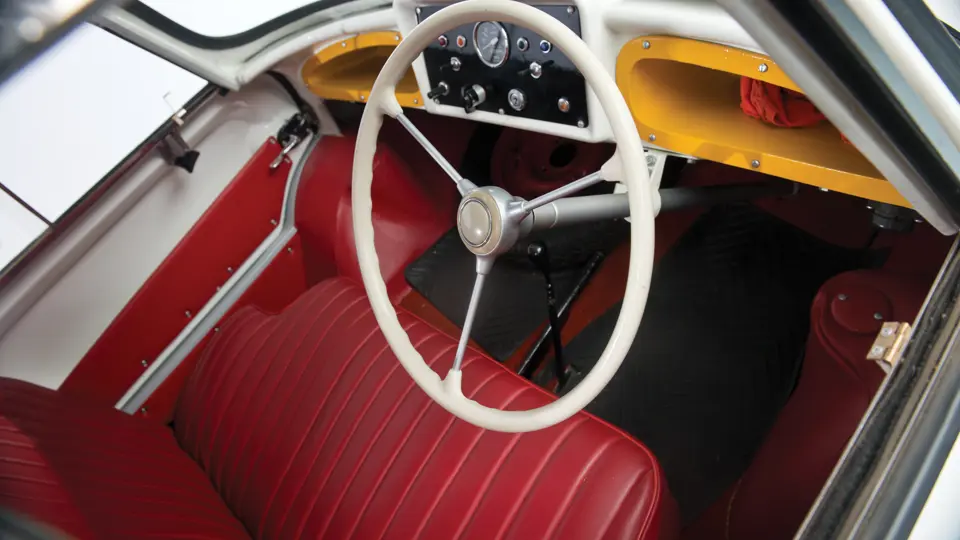
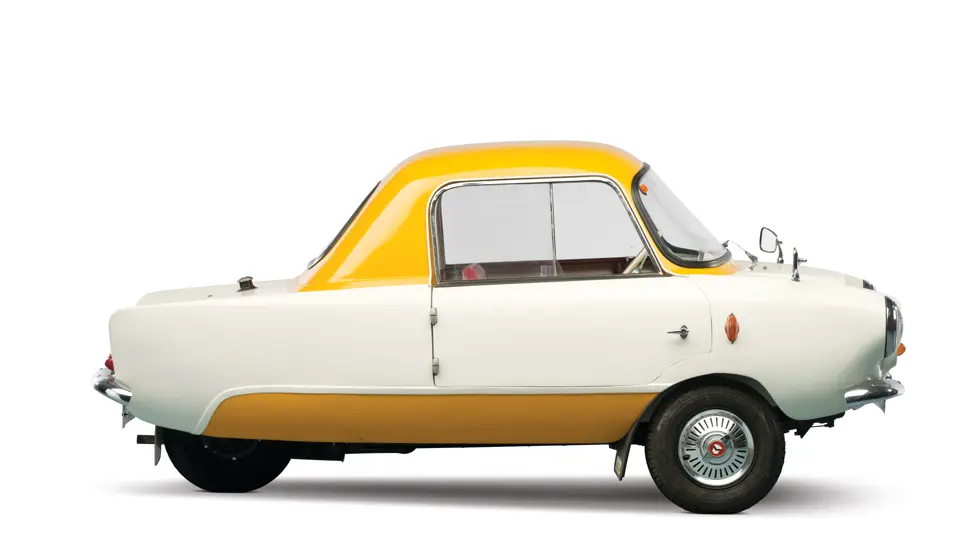

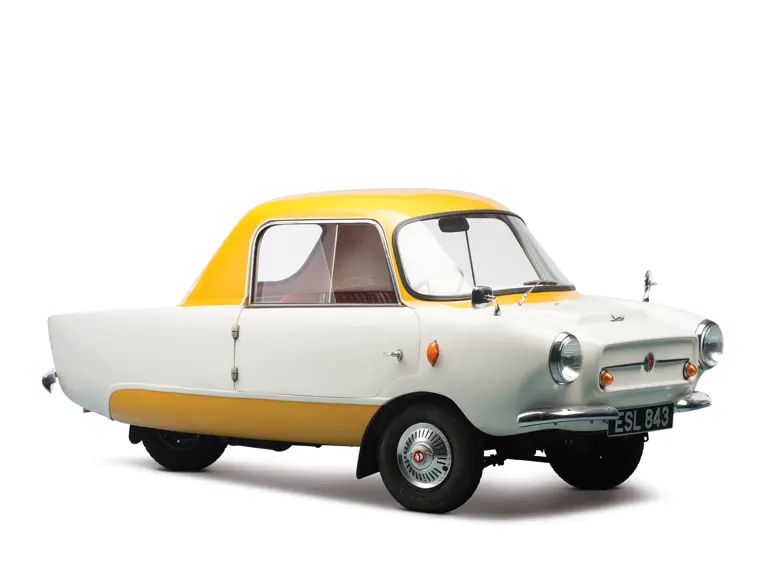
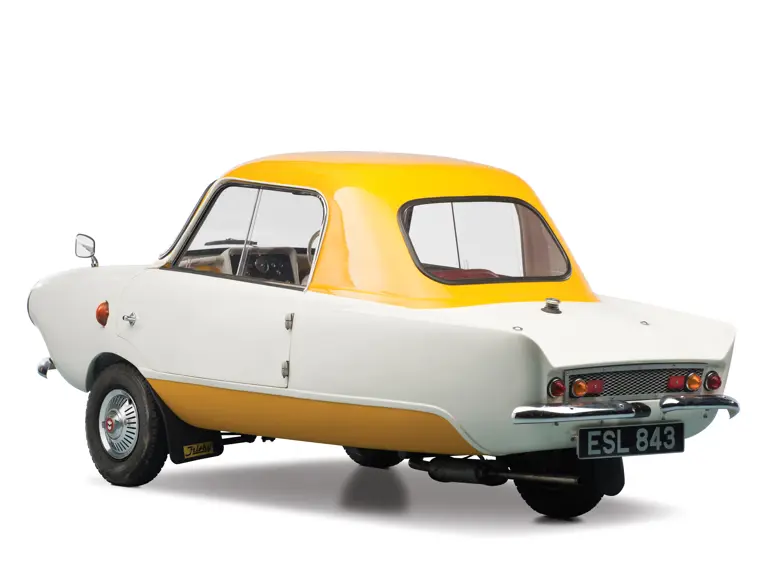
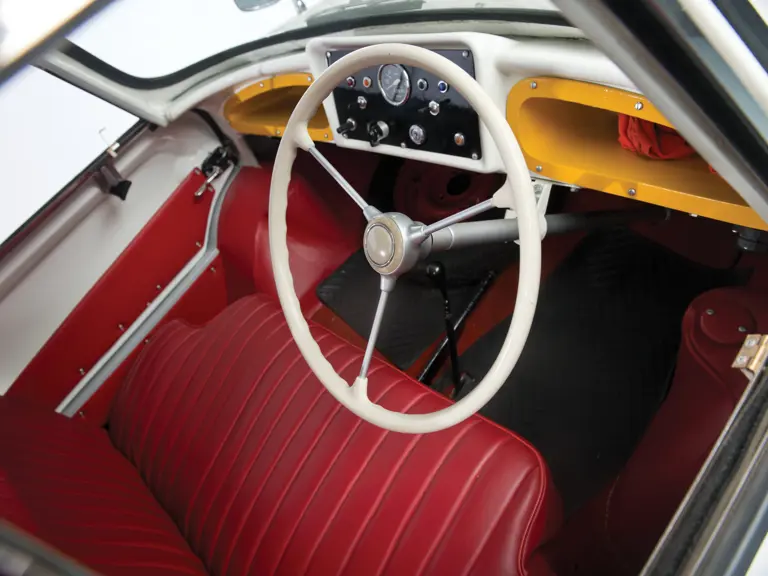
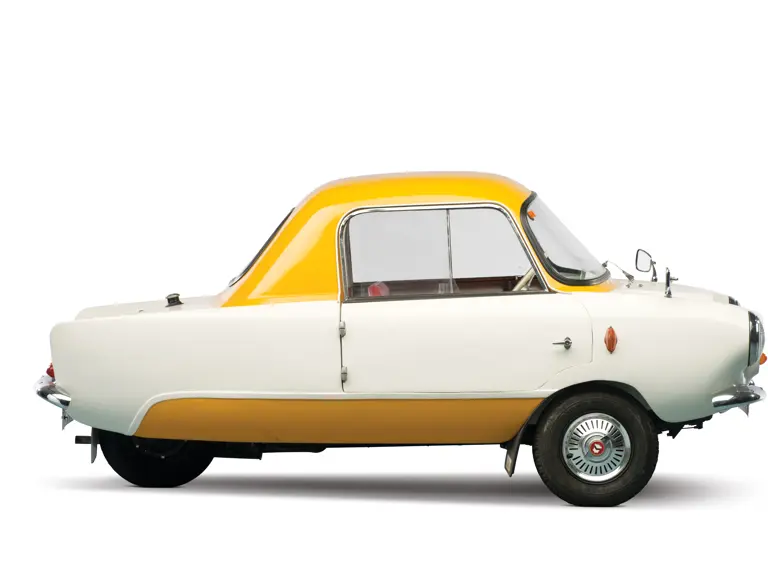
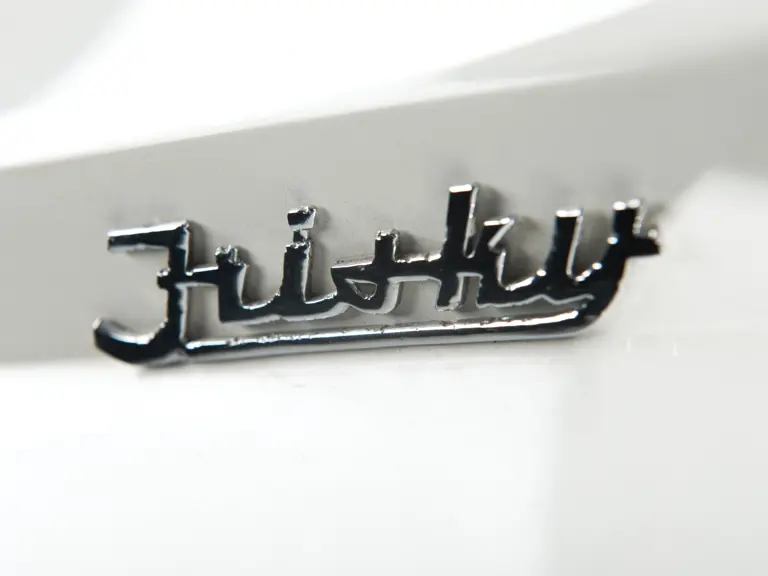
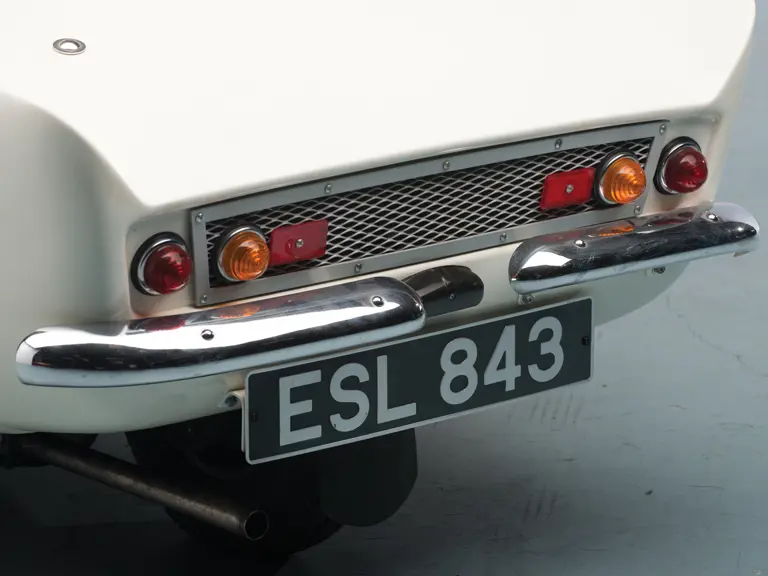

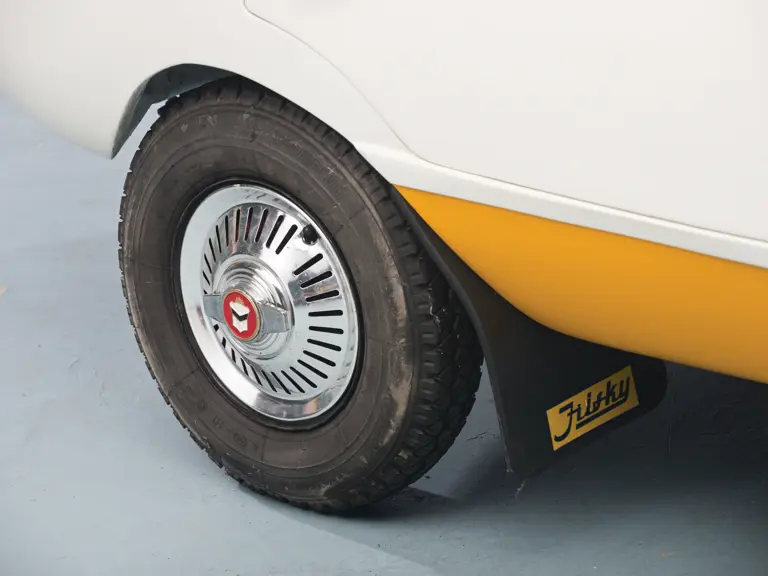
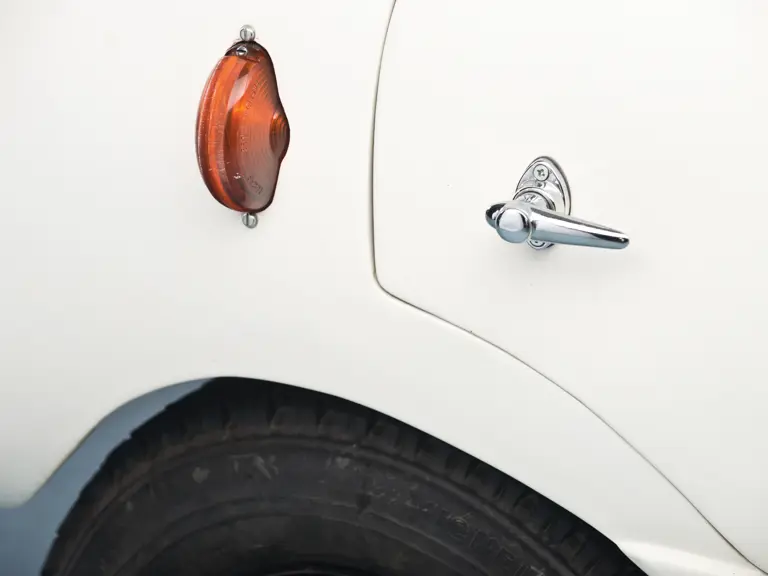

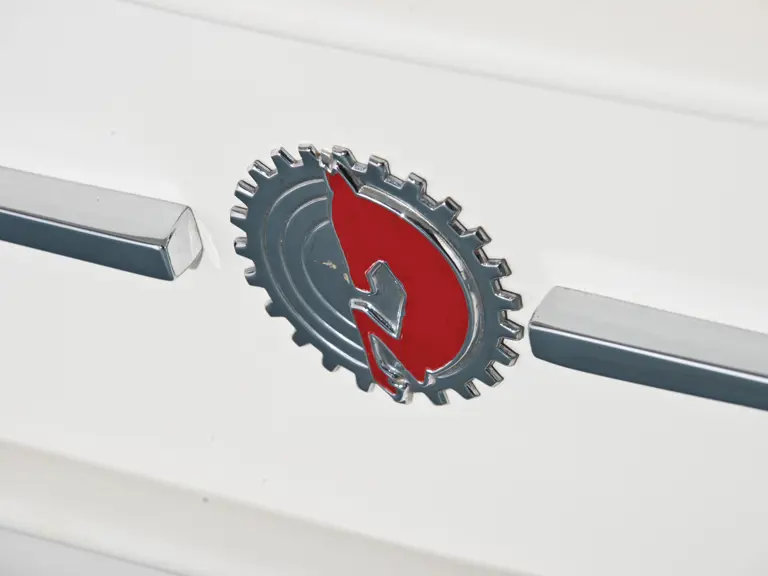
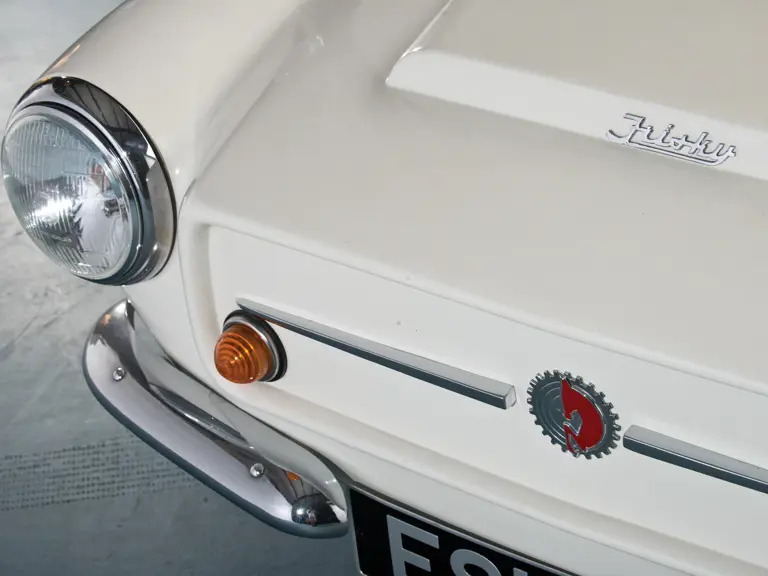
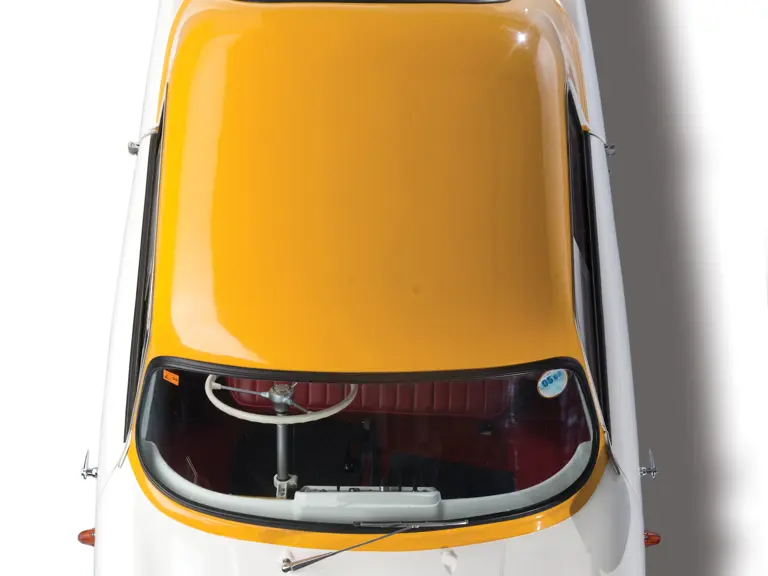

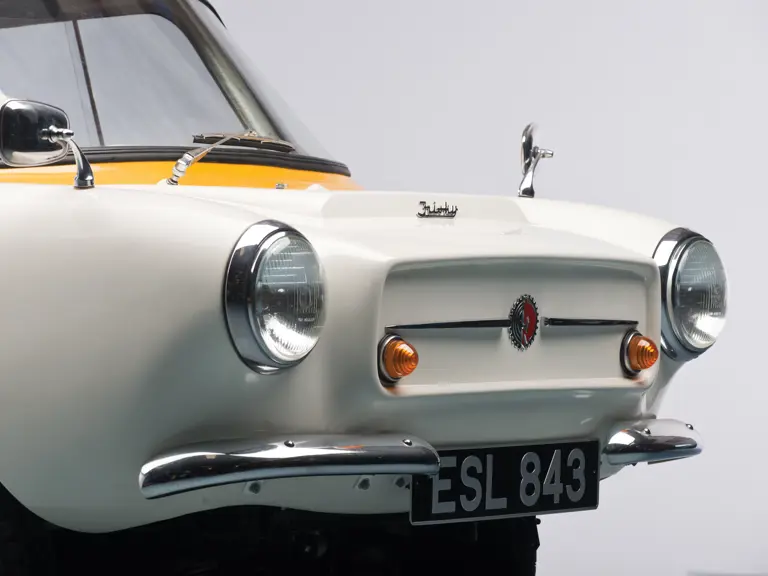
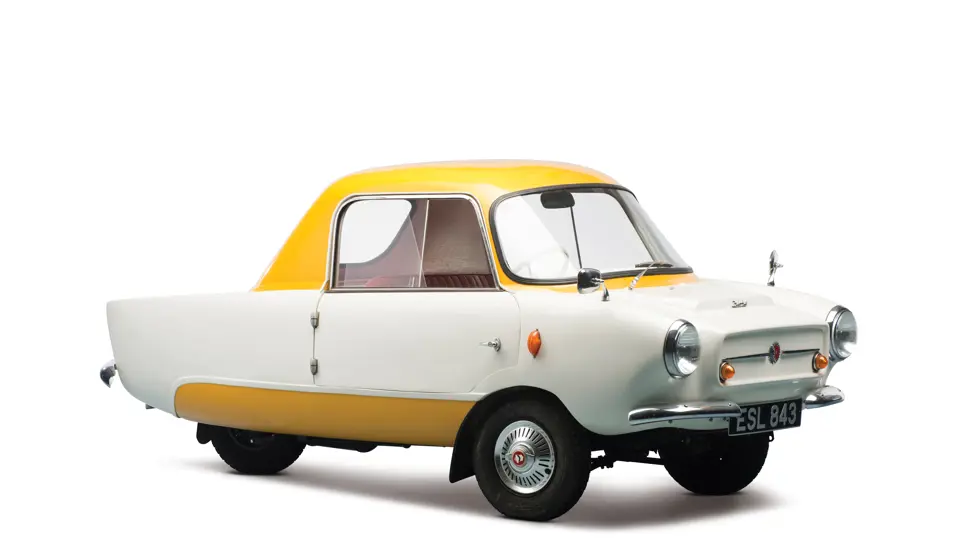
 | Madison, Georgia
| Madison, Georgia
